Our Wellness through Movement philosophy is focused on how movement can be a transformational path to: |
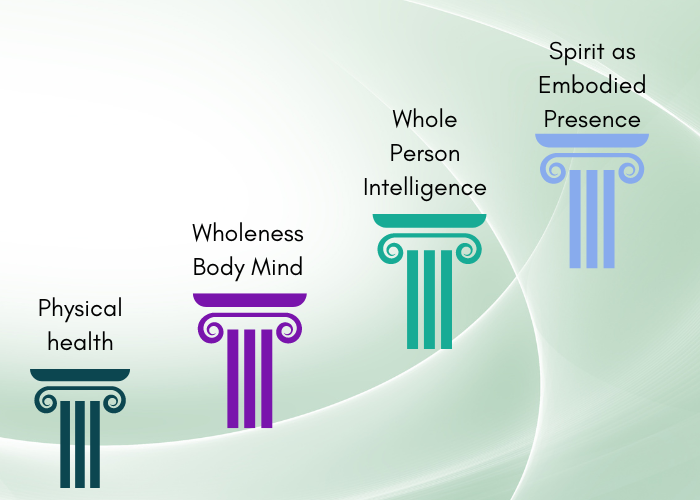
You create your life each time you move. Movement is life. What life are you creating, move by move?
Most of my clients show up with a distorted sense of themselves. They tell me about the parts that need to be fixed.
As if each part of their body has a pink sticky note on it, a label for what needs to be fixed.
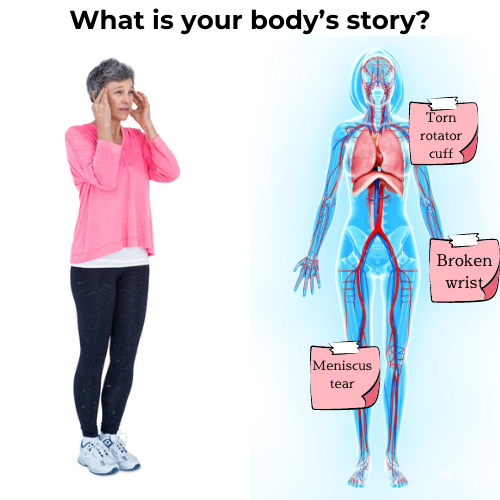
When moving hurts, it is time to expand your horizons, not fortify your limits.
When you become curious about your movement, you open a hidden door to your next possible move.
Learning to notice your body with kind attention, you open up unexpressed possibilities in how you move.
I believe you can learn to move freely, with joy, at any age...
Even when a helpful expert has told you it will only get worse from here.
To shift your painful, disappointing movement and open up your whole person intelligence you need to: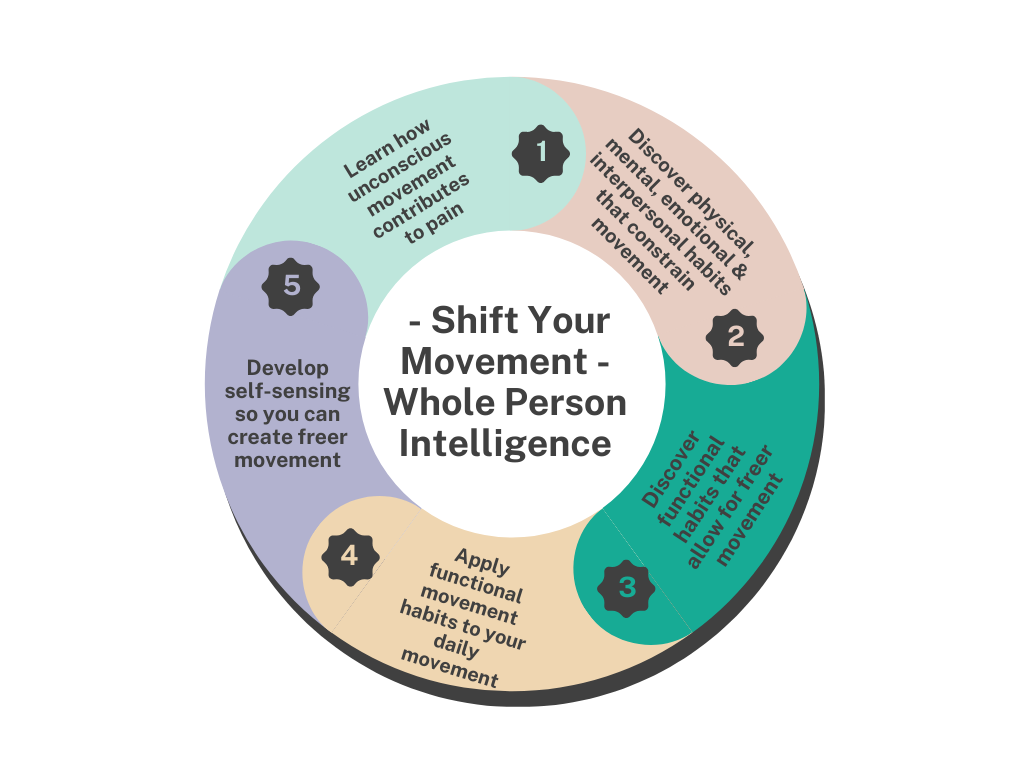
I call this learning to move wisely, as a whole person - rather than moving to compensate for and protect the parts that need to be fixed.
It’s not your fault.
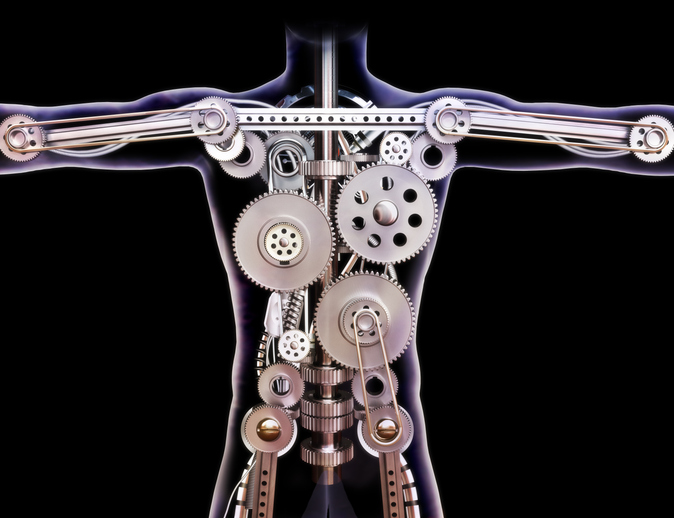
We learn to hold a machine-orientation to our body. We mostly ignore it until it stops working the way we want.
Then we see a helpful health expert.
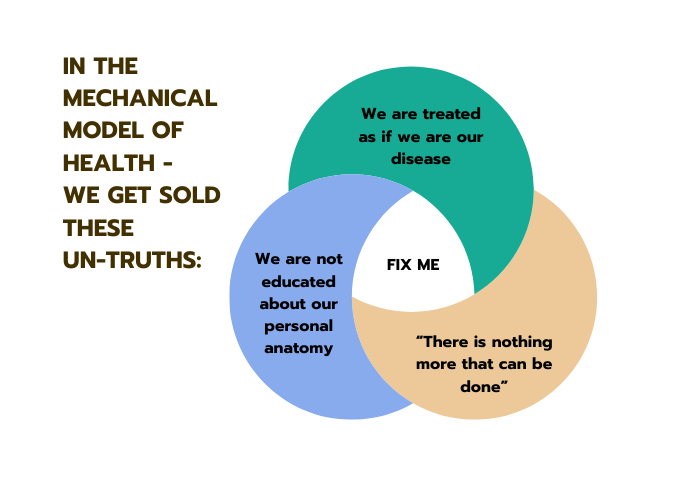
We learn to view our body as a collection of problem parts rather than knowing our body as a resource and source of essential information. When helpful experts say, “There is nothing more that can be done.” We believe that as the whole truth, not allowing that there is a limit to their perspective. We believe them, not understanding that what they are really saying is,
“There is nothing more I can do for you.”
We try to squeeze our experience of our bodies into the categories that our helpful health experts use. When we act to get "fixed", we do not invest in a process of learning from our experience. We focus on finding the right fit so we can be fixed.
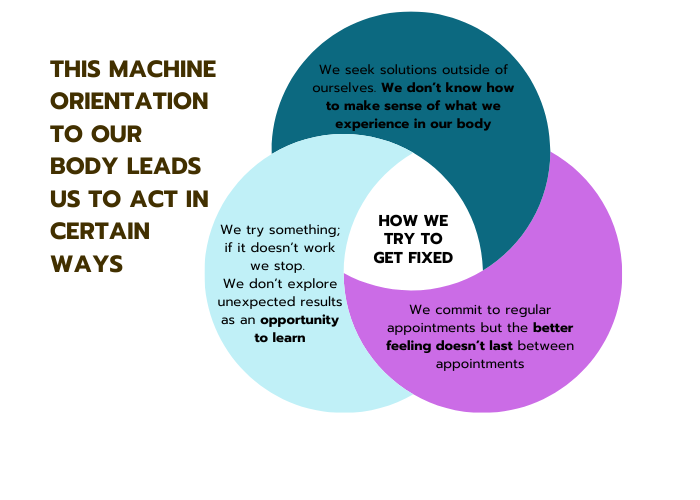
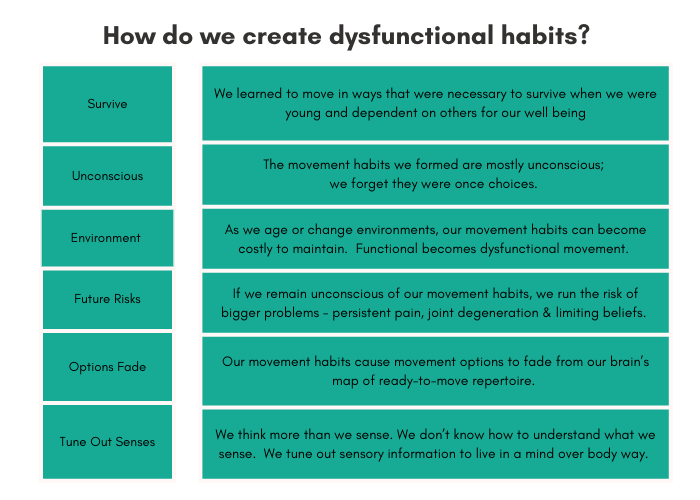
When I work with a client I take them through this process:
- Intake - What does movement look like in your daily life? What is a good movement day for you? What brings you joy in your movement life?
- Observation - What does your movement look like?
- Functional Movement Experiments - What will Support You?
- Hypothesis - What is possible and what is limiting? We co-discover what you can do.
- Lesson Focus - What we will focus on for the session.
- Enter the Movement Lab - Identify movement habits that create unwanted results and create movement habits to create your desired result.
- Apply the Movement Lab to Life - we apply what we learn in the movement lab to daily life.
My approach is for you if you are:
- Recovering from an injury after the initial, acute healing is completed.
- Recovering from trauma such that you can pay attention to yourself without feeling overwhelmed at every moment. I am not trained to provide trauma recovery supports and want you to have the support you need.
- Have a goal you want to achieve.
My approach is not for you if you are:
- In the middle of an acute healing process. You need time to heal. This is not the time to start a body-based learning process.
- Needing to develop core self-regulation capacity following your trauma. There are excellent practitioners who specialize in that process and I am happy to refer you to them.
- Wanting to be a passive receiver of “feeling better”. We work together to discover your untapped possibilities. I do not work on you while you wait to feel better.
Cheryl talks about the four pillars of our philosophy in this video: